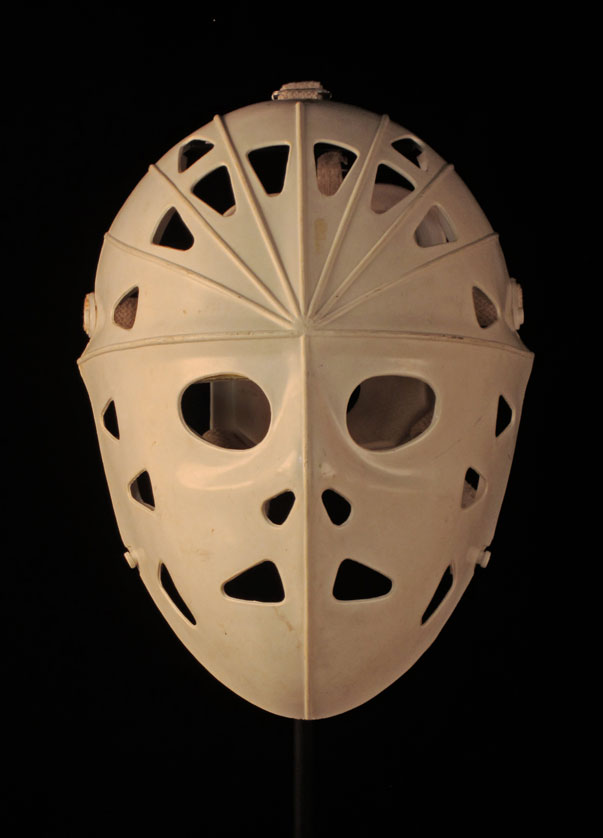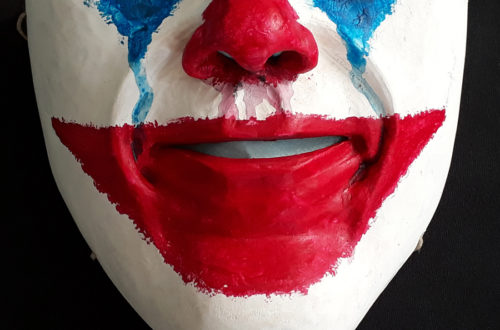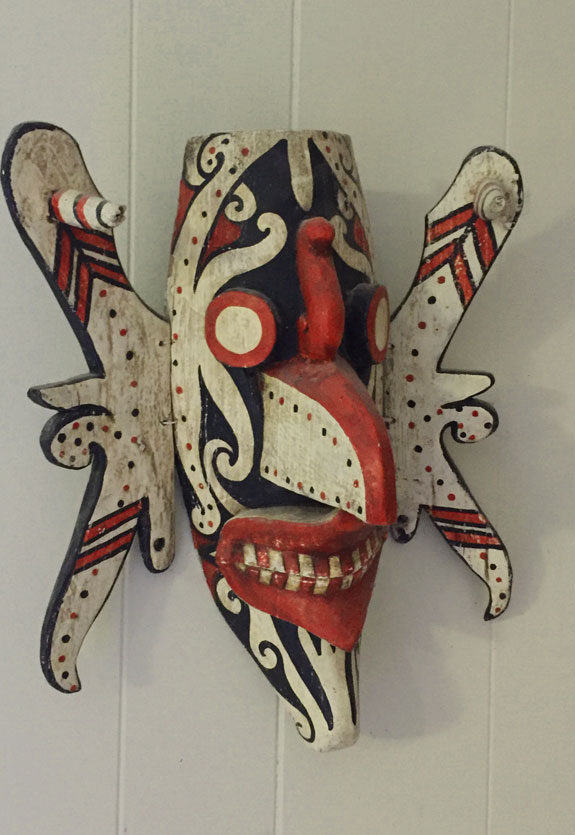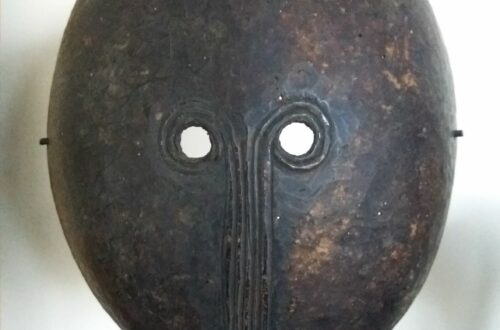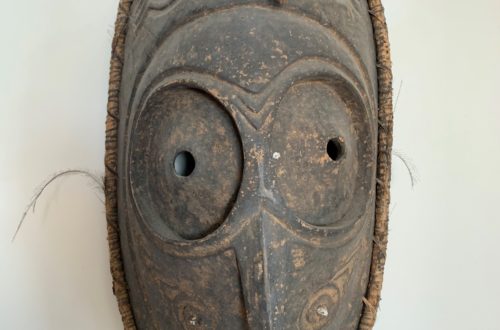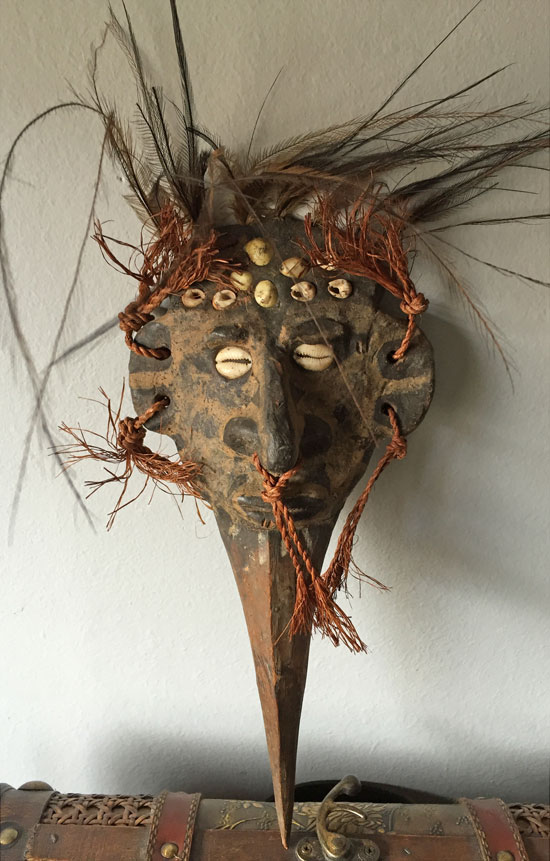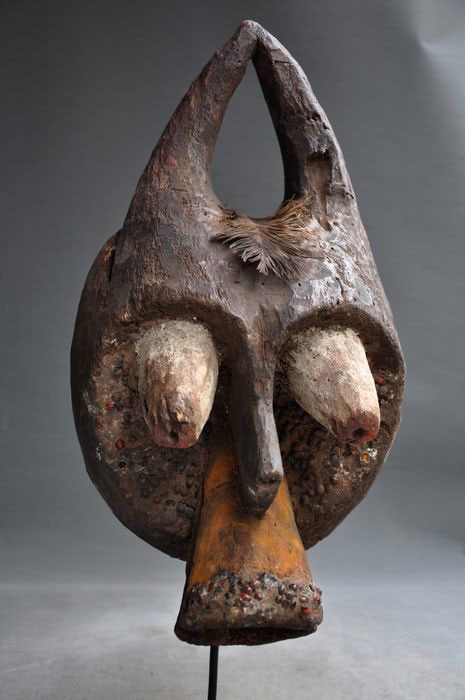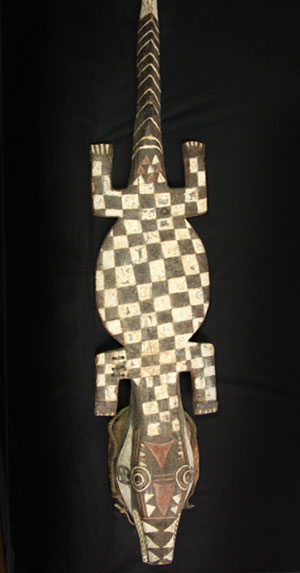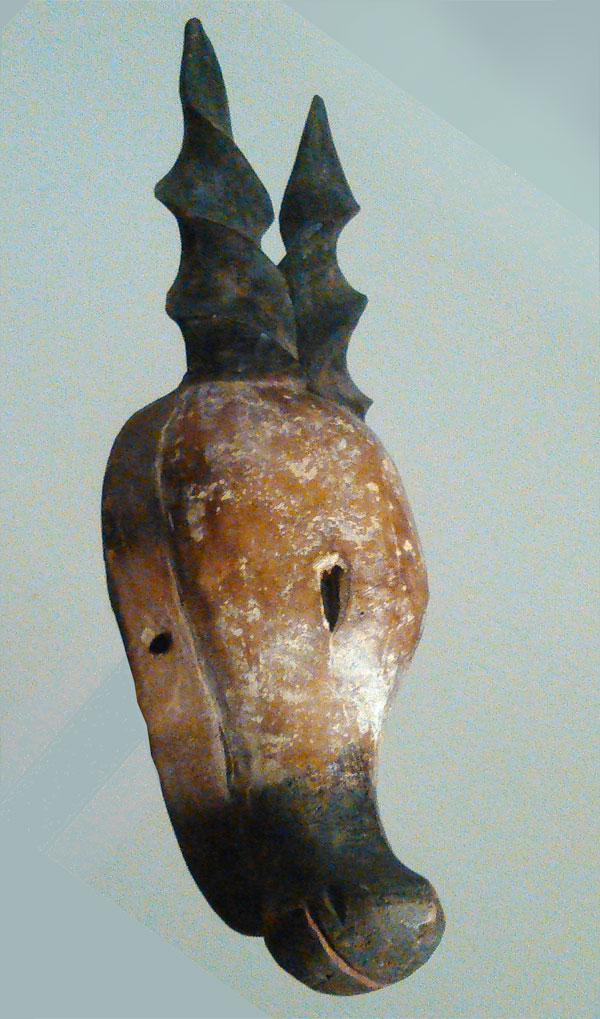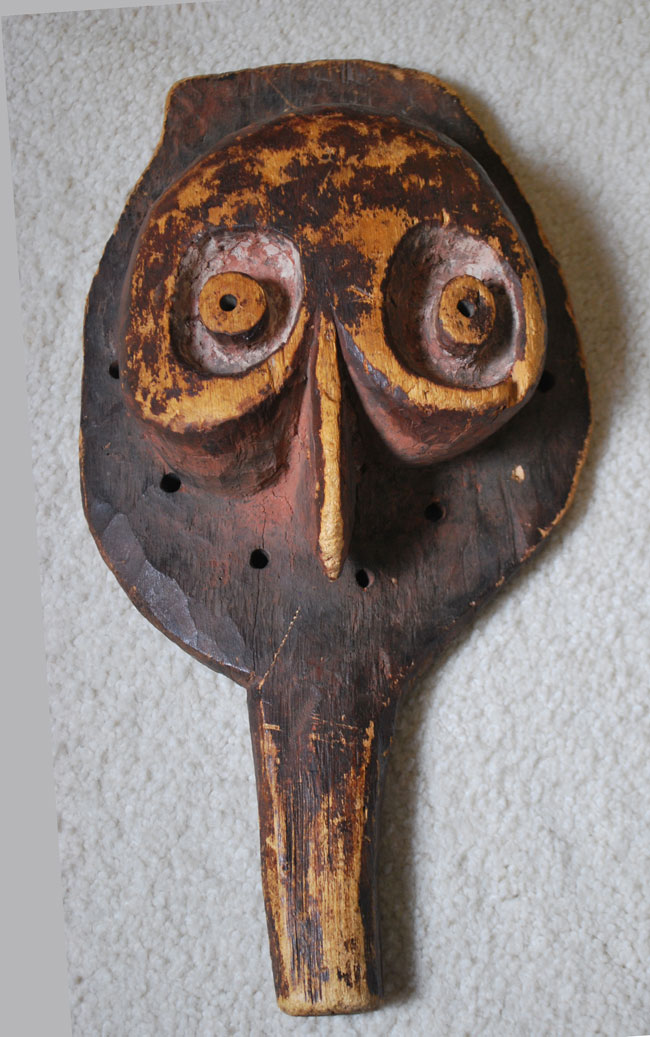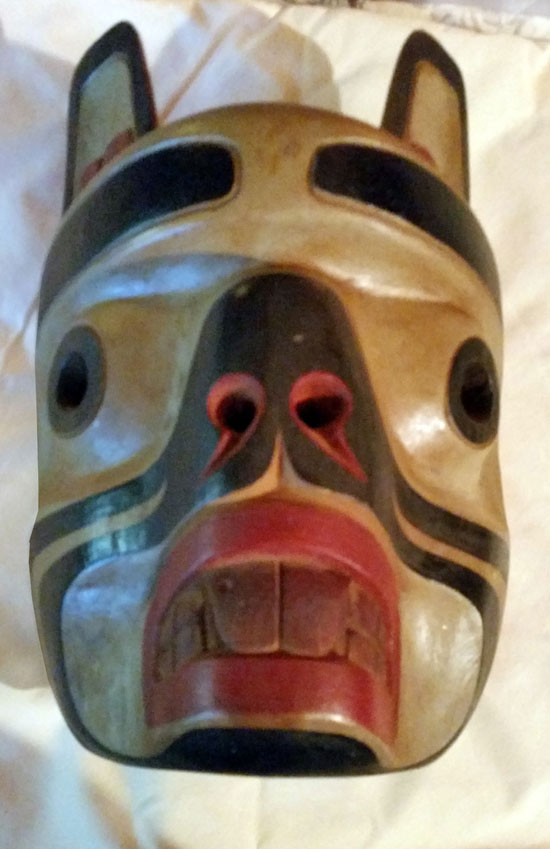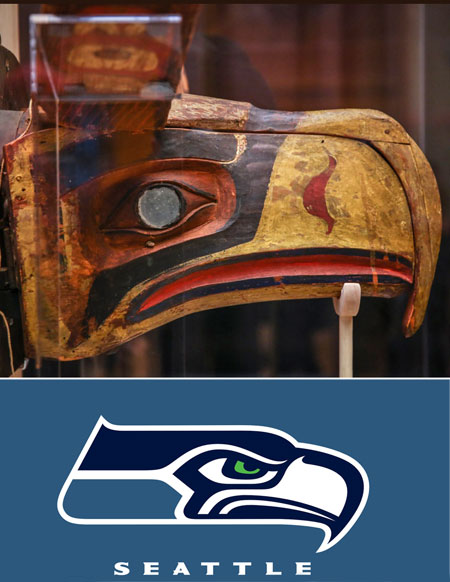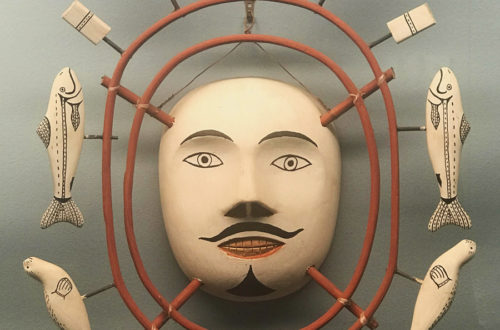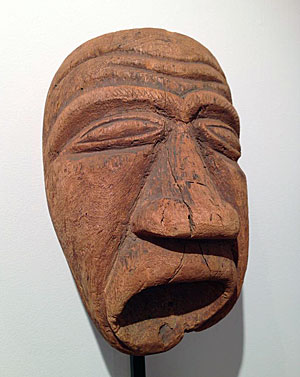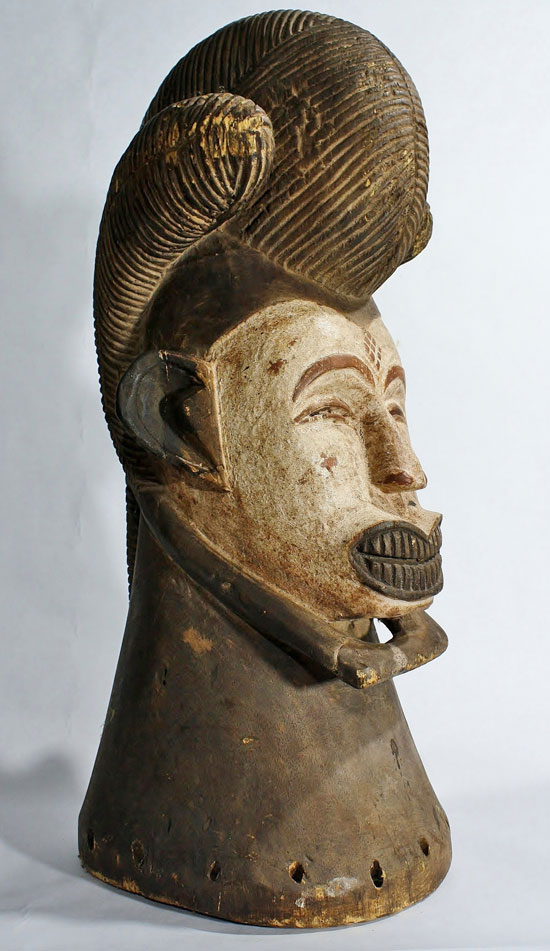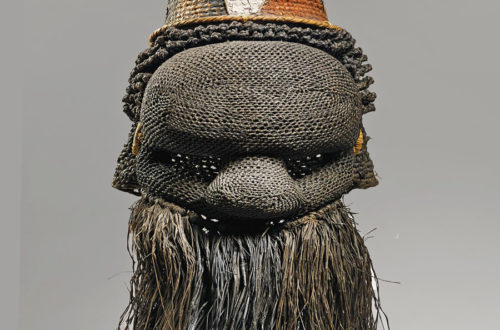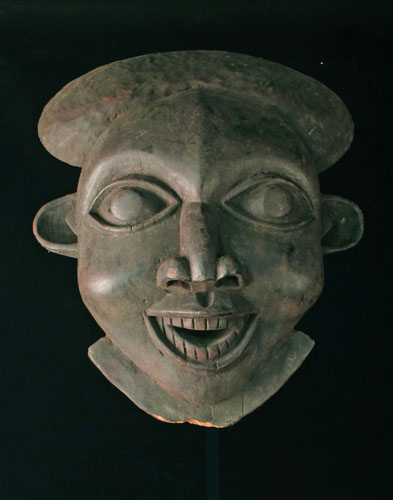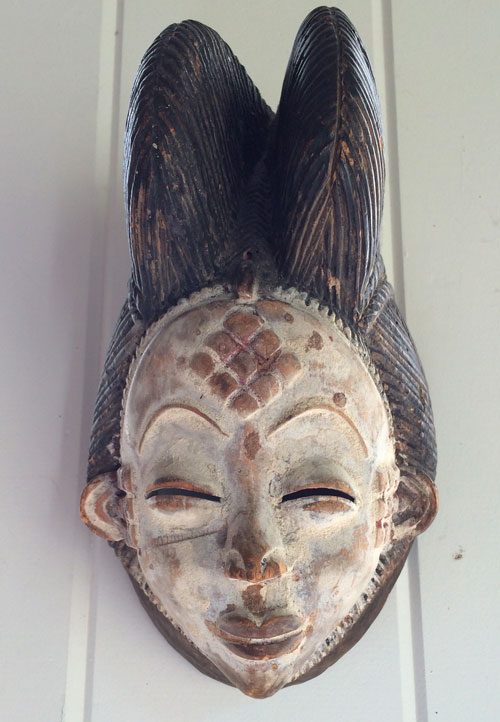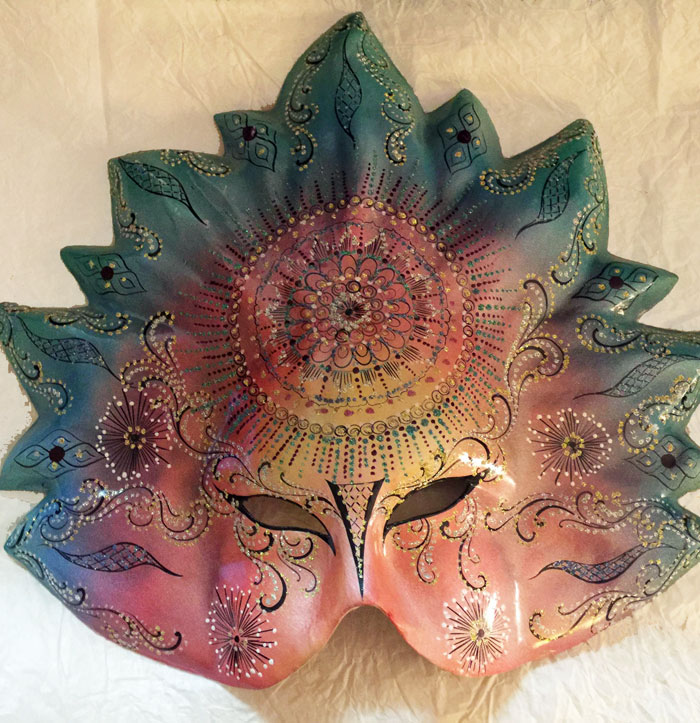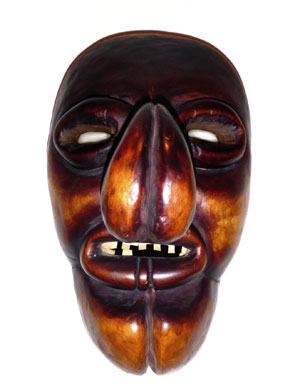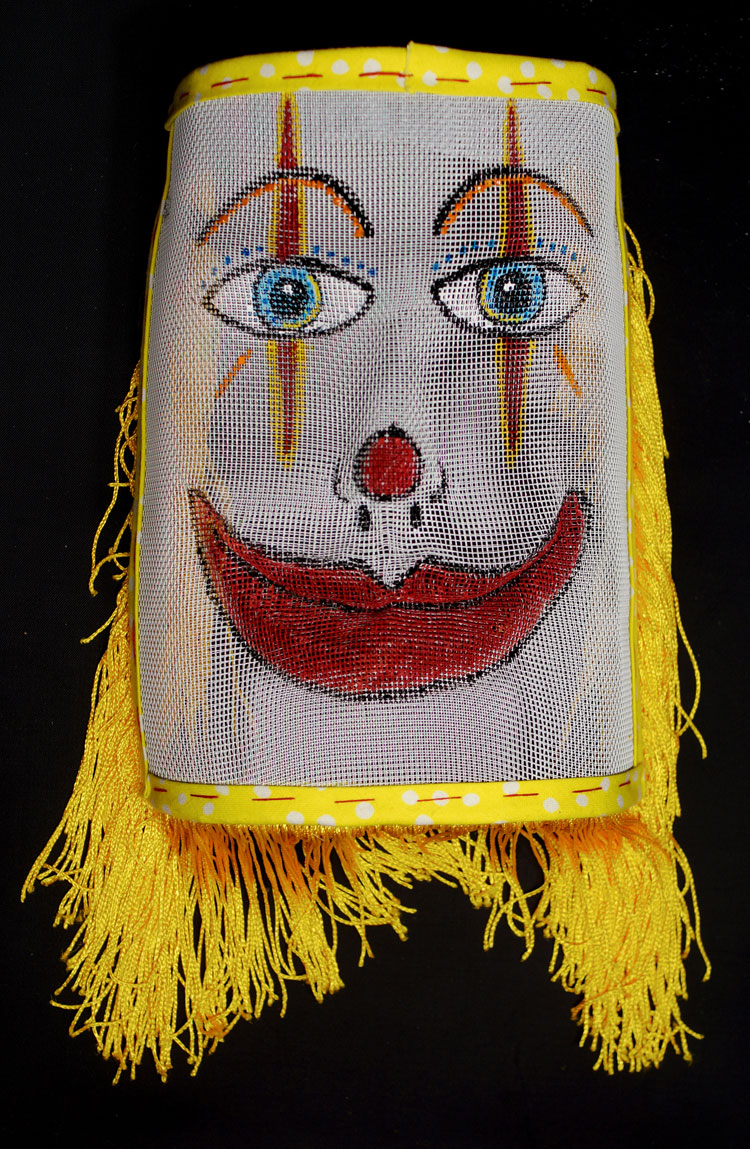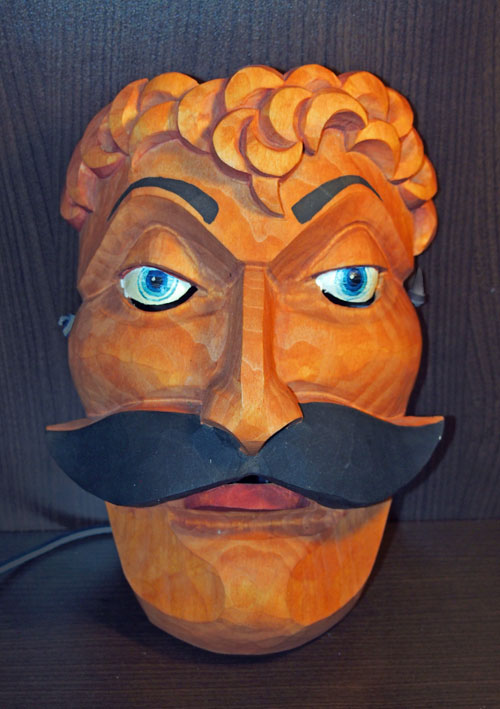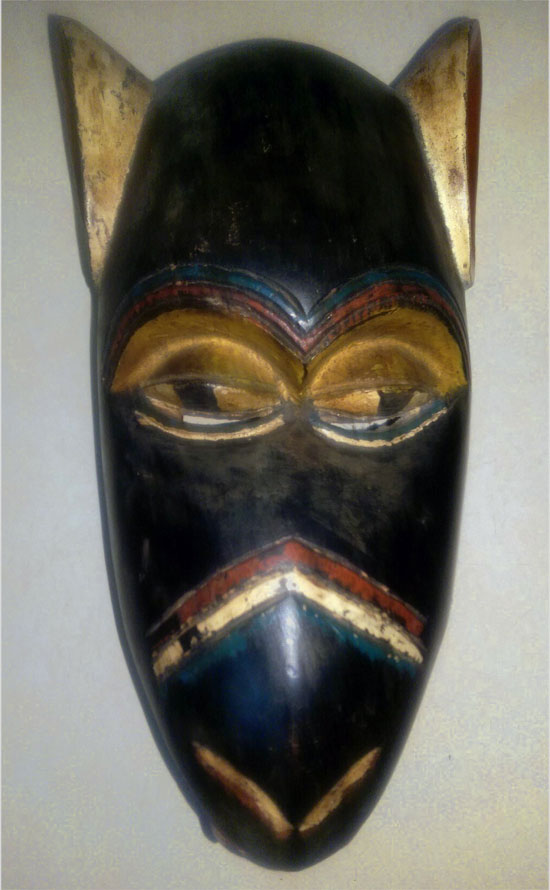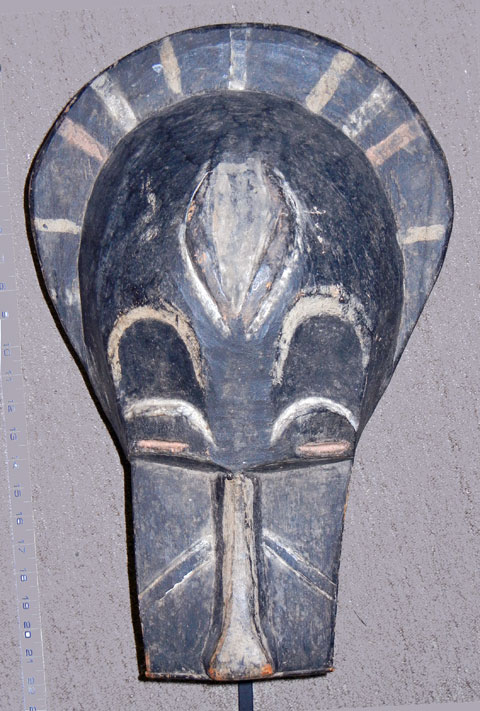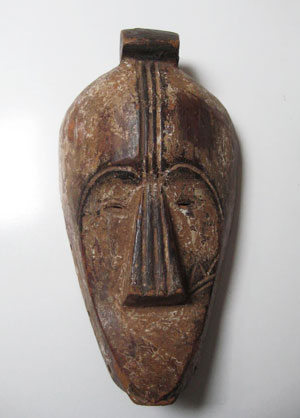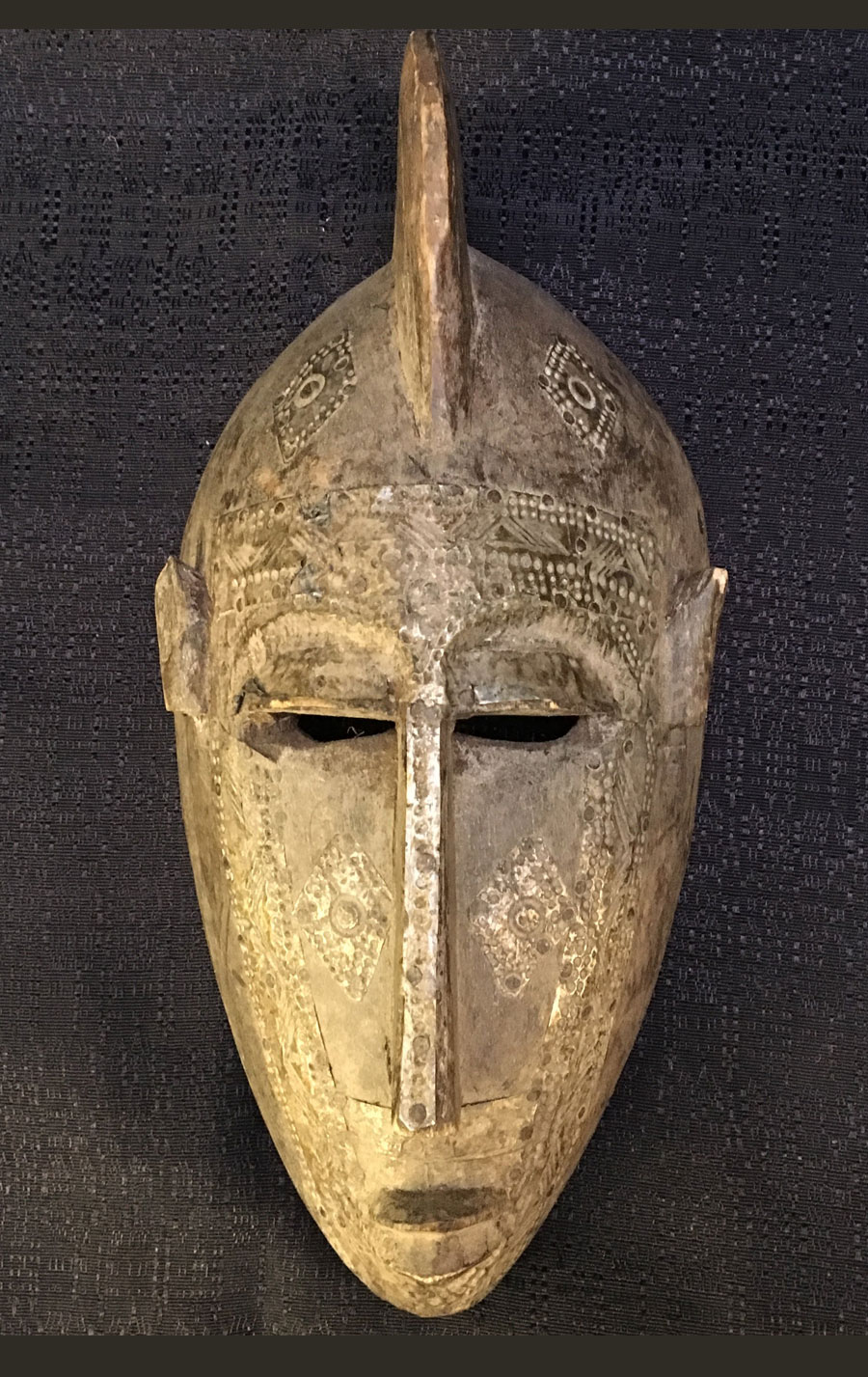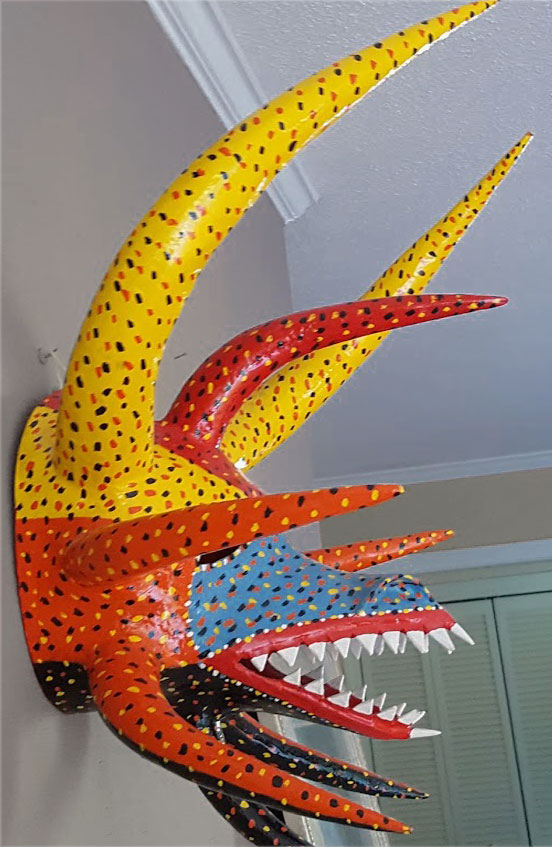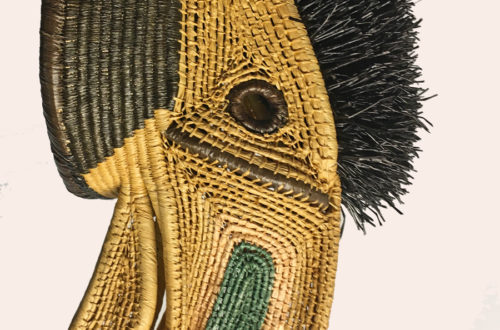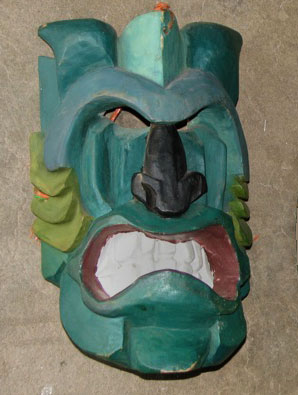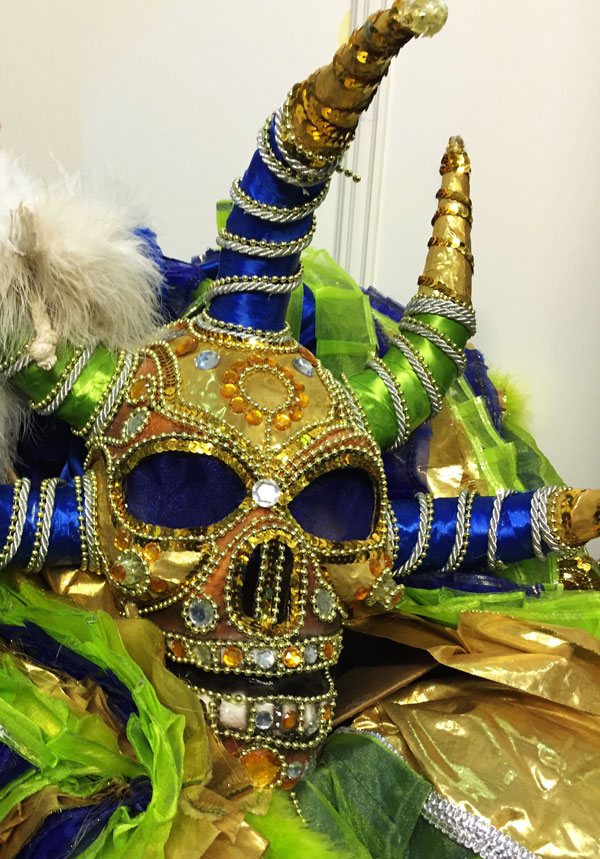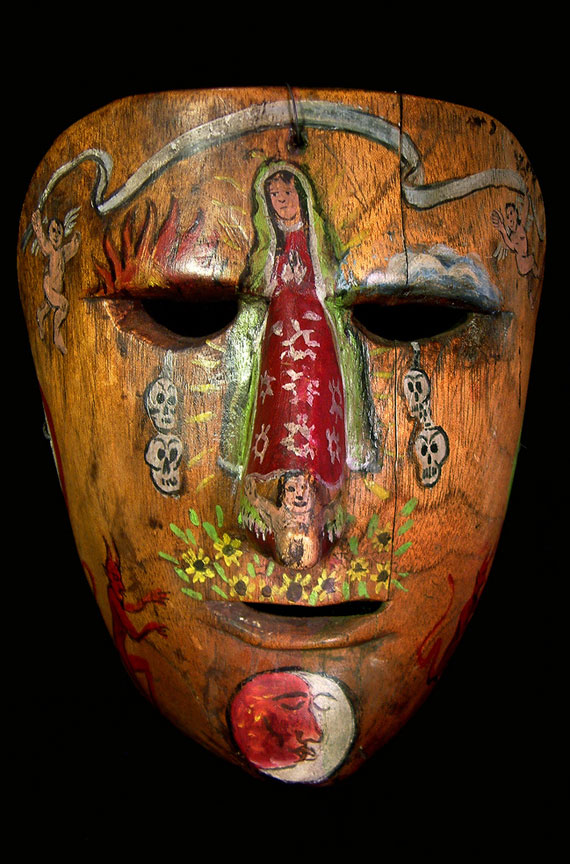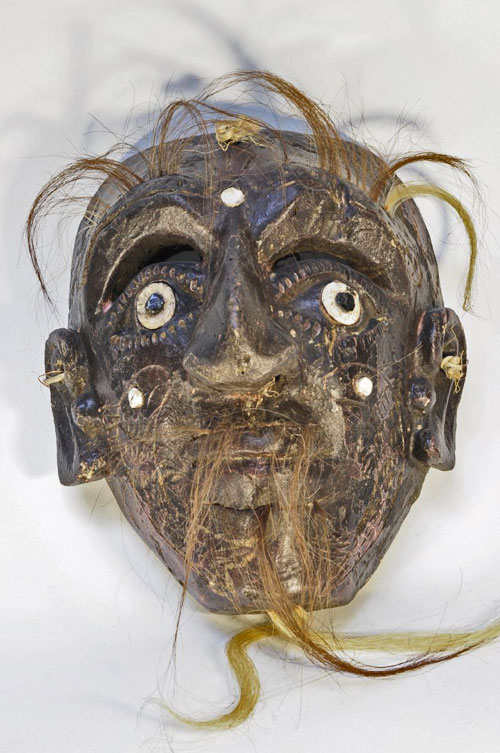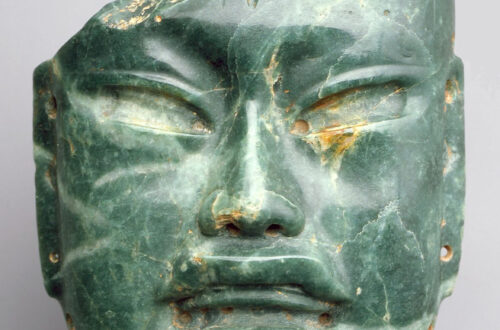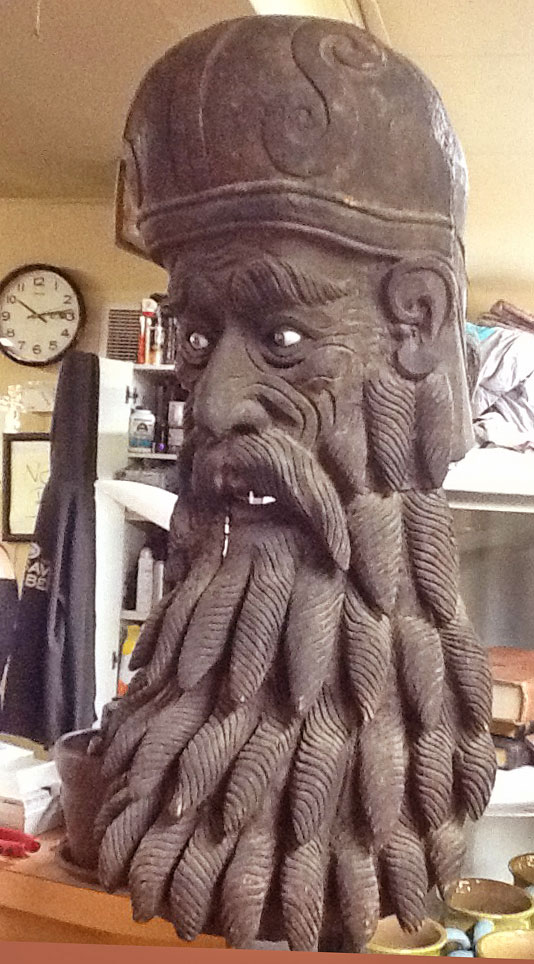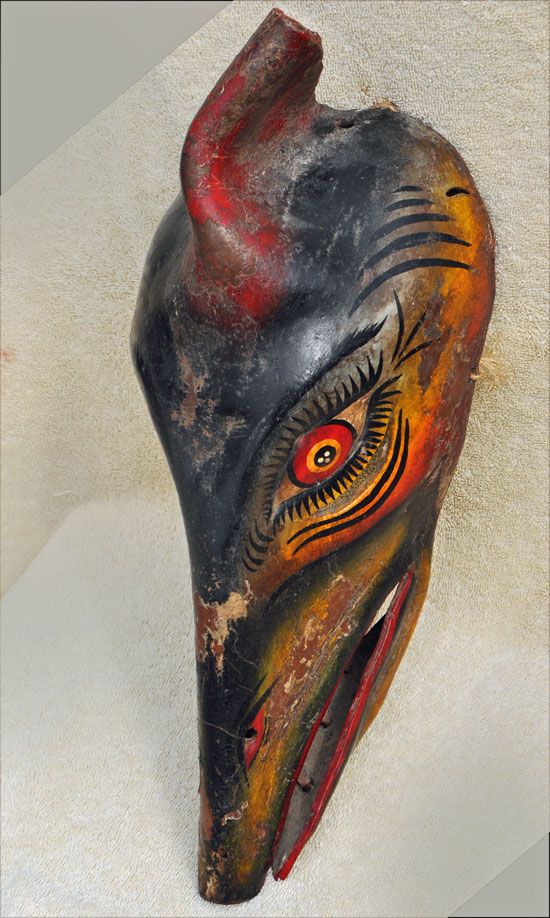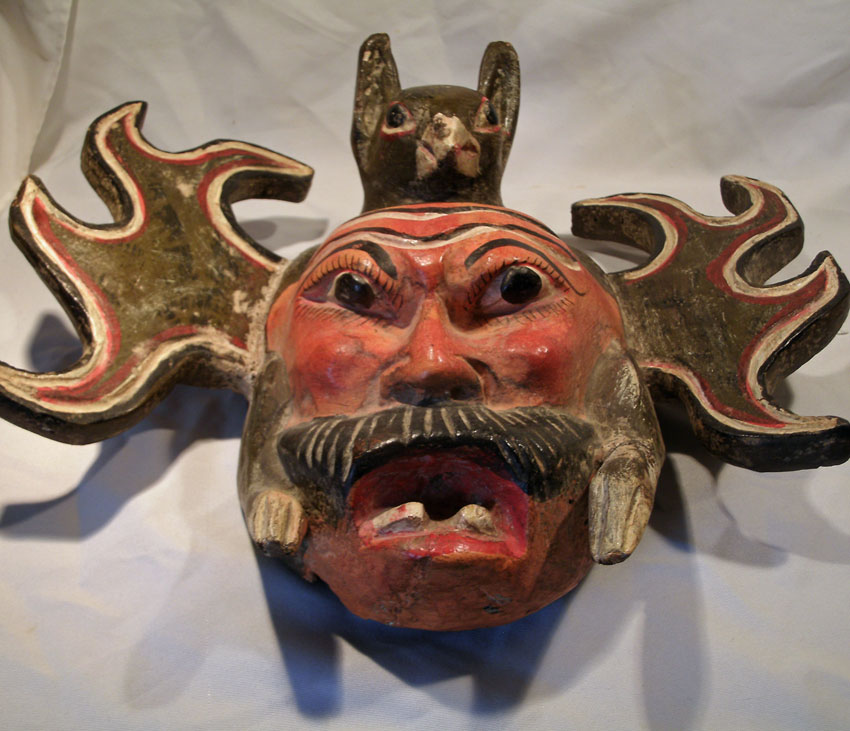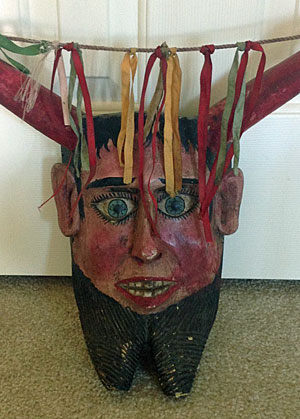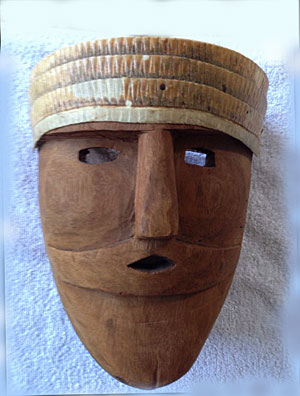There are masks that have nothing to do with ritual, ceremony or celebration. One of these categories is protection, and these often scary masks can be great fun to collect. Here we have a old street hockey goalie’s mask. It is made of white, Mylec plastic and has padding, straps and buckles on the rear. Made in Canada, it is the same model worn in the opening scene of the 1996 film Heat. Masks are worn because a speeding puck or out-of-control stick could do serious damage to the face. But there is a secondary reason for the way protective masks are designed. Their appearance can be very intimidating to…
-
-
Hudoq mask from the Dayak of Borneo
Q: I was living in Malaysia in 1990-91 and purchased a number of masks while there. I know one is a Hurdoq mask I got in Borneo but am not sure about the other masks. I’m interested in finding out what their function is and approximately what they may be worth. Thanks for any help you can provide. I’ve attached pictures of various masks rather than multiple views of a single mask. Michael, 1053 A: Thank you for the Hudoq mask photo. In the Dayak language hudoq means hornbill bird. These famous masks are worn during agricultural ceremonies and to welcome important guests. Like so many ethnographic artifacts from around…
-
Mumuye or Mambila animal mask
Q: Important for me is your opinion of this mask. This is a Mumuye zoomorphic mask from my collection. This mask as you can see is very old with 45 cm height and weight of 1200 grams . I buy before month from a private seller. Negris, 1052 A: It could be a Mumuye vabo or a Mambila suaga mask. Both tribes are fairly close to each other in southern Nigeria or northeast Cameroon. Either way, this is a beautiful West African mask. Though a bit crudely carved, it is unique in both design and color, and would be a nice addition to any serious collection. Unfortunately a museum…
-
Kwakiult mouse mask for Disney
Q: I also have a mask that an Indian tribe in Canada gave Walt Disney. It is really big and there is an engraved plaque stating that it was a gift to Walt. It is mounted on wood. Anne, 1051 A: This could have a lot going for it. Well made NWC native American masks are a favorite of collectors. Ones depicting mice are rare. This particular one was presented to the creator of Mickey Mouse as a gift from the tribe. It could be worth a lot if the quality is good. I wish we had some better photos. Fortunately, you can read the label that was stuck to…
-
Punu crest mask or reliquary head
Q: This is my Punu crest mask/reliquary head. In the research that I have done, I have not seen anything quite like this one, i.e., the chin strap and mouth shape. Any information that you or your readers could provide would be appreciated. This mask was purchased in the Philadelphia area in the early ’90s. Dan, 1050 A: Let’s try to help Dan. He thinks he has a really nice Punu artifact. But there is no provenance. The best I can tell him is that I enjoy the way it looks. Surely their are viewers who can tell him a bit more.
-
Fancy Venetian carnival mask
Q: Your site is the only place I found information about a mask like this. I think it might be the same Barbare Venezie as another carnivale mask you published a photo of. I fell in love with this through an estate auction and don’t even have it in my hands yet. The pics are from the estate sale website. I really want to know more. Paula, 1049 A: They are so pretty I decided to share it with our viewers even though we have a similar one already in the archives. Perhaps that’s the one you’ve seen. And don’t hesitate to wear it. These masks hold up very well. …
-
African monkey mask
Q: I have no idea about this mask. John, 1048 A: It would be nice to know dimensions, when, where and how much you paid. None the less, I can tell you it is some kind of monkey mask from West Africa. More specific information will be difficult if the mask was made for sale to tourists or exporters, which I am pretty sure is the case. Comments will be appreciated.
-
The fabulous Vejigante
Q: Apologies for attaching incorrect photos. Here are jpegs of the the front, back and side of the mask. Please tell me whatever you can about this beautiful mask. Thank you. Marcey, 1047 A: Vejigantes are from Ponce, Puero Rico, and are among the most creative masks used for carnival parades around the world. This one was done by Miguel Caraballo. A larger one is shown on post #745. The Vejigante represents the evil Moors who battled St. James in Spain hundreds of years ago. Its design and colors are more African than European, which demonstrates the influence of blacks in the Caribbean. A- Save
-
Highly decorated Mexican mask
Q: This one is still a mystery. It appears to be a very old Mexican mask, but I’ve never seen one painted like this. It was purchased at an online auction many years ago, and the seller knew very little about it. Perhaps one of the regular visitors to your site can identify it. Dan, 1046 A: It’s a great little mask. My guess is that it was an old, beat up mask from Hidalgo that an artist decided to improve for the collector market. The Blessed Virgin, skulls and flowers are done in a cartoon technique that is very Mexican. Then the whole thing was coated with tinted varnish.…
-
Leather mask from Mexico
Q: This is a leather mask I think from Indonesia or Bali but it is one from Dads inheritance and I don’t know any more than that. It shows wear like it has been used over the years. I know, I played with it when I was a kid. Rick, 1045 A: I could take a wild guess and say it is Maravilla, the dog character in the Tecuani dance performed by the Nahua people of Guerrero. But leather masks are made in several other states of Mexico as well. When I enlarged your excellent pictures I though I could detect a coating of tinted varnish. That would suggest it…
